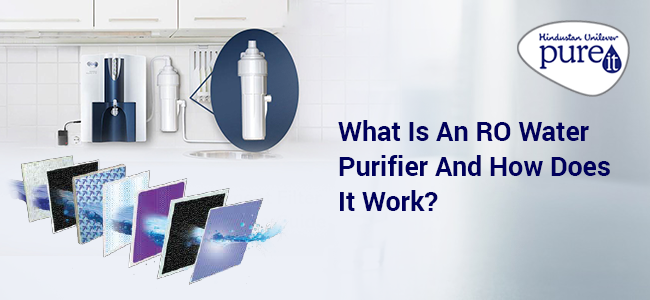Reverse Osmosis has proven itself to be a breakthrough technology for water purification in recent years. Not surprisingly, several brands have adopted it for manufacturing water purifiers. In fact, RO technology is being successfully used across industries, including cosmetics, pharmaceuticals, seawater desalination, food and beverage processing, and industrial boilers. But did you ever wonder why it is so popular? Did you try to explore the technology that powers RO water purifiers? Let us do the honours.
What is osmosis?
Solvent
A solvent is a substance that dissolves a solute, resulting in a solution
Solute
A solution is a special type of homogeneous mixture composed of two or more substances. In such a mixture, a solute is dissolved in another substance, known as a solvent.
Solution
A solution is formed when a solute is dissolved in a solvent. To understand what Reverse Osmosis is all about, you first need to understand what osmosis is. Put, when the solvent is water, it denotes the process by which water moves through the semi-permeable membrane from a solution of lower concentration to a solution of higher concentration.
What is Reverse Osmosis?
Reverse osmosis is achieved by applying pressure on the semi-permeable membrane. The osmosis is reversed, and the solvent, water, moves through the membrane from a higher concentration solution to a lower concentration solution. In the context of an RO water purifier, the solvent water flows from a higher concentrated side (more contaminants) of the RO membrane to the less concentrated side (fewer contaminants) to provide clean drinking water. The purified water produced is called the permeate, while the concentrated water left over is called brine. In effect, the semi-permeable membrane is blocking the contaminants of water from entering the output stream.
How does an RO purifier work?
The most important part of an RO water purifier is the semi-permeable membrane, a fine filter with pores having a diameter in the order of microns. However, it is not the only filtration involved in a typical RO water purifier. For instance, the most advanced line of purifiers from the brand Pureit involve a seven-stage purification. The stages include pre-sediment filter, pre-RO carbon filter, mesh filter, RO membrane, UV filter, post-RO carbon filter, and micro filter membrane. While all RO purifiers don’t have this elaborate setup, most of them combine sediment filters, carbon filters, and semi-permeable membranes.
The prefilters de-sediment the water, preparing it to filter the tiniest contaminants by the semi-permeable membrane. The sediment filter reduces dirt, rust, and dust, while the carbon filter reduces VOC (Volatile Organic Compounds), Chlorine, and other contaminants. The semi-permeable membrane filters the contaminants present in the water. The post-RO filters polish the water once it exits the storage tank.
Why is RO so popular?
Reverse Osmosis water purifiers have been recognised as the best water purifier for home because of the sheer purity of water it helps to produce as output.
TDS (Total Dissolved Solids) include the organic and inorganic contaminants dissolved in the universal solvent. RO removes more than 95% of total dissolved solids from the water when the TDS quotient is < 2000 ppm.
It also removes heavy metals like Lead, Mercury, and Arsenic that contaminate the water. As a result, the water is soft, free from nasty odours, and sweet to taste, with near distilled-water purity.
RO water purifiers are also incredibly easy to install and maintain. In fact, service personnel of reputed brands is trained to service RO units specifically. Let us now look at the latest and greatest from the Pureit line of RO water purifiers.
Pureit Copper + Mineral RO+UV+MF Water purifier
How does the water purifier work?
Pureit Copper+ Mineral RO+UV+MF has a 7 stage purification system that first purifies water, and then the trademarked Copper Charge Technology charges it with the goodness of fresh copper ions.
What is its storage capacity?
It has a storage tank capacity of 8 litres under running water. The process of filling the storage tank is fully automatic because when you take water out of the tank, the purification process automatically refills the storage tank.
What is the purification capacity of the water purifier?
It can purify up to 28 litres of water per hour. Note that the time taken to purify is influenced by the life of the filters and the input water pressure.
